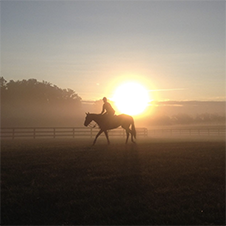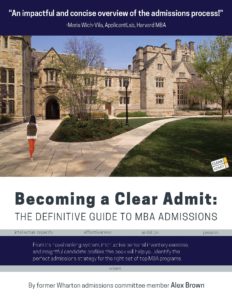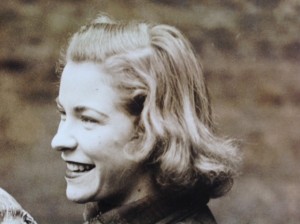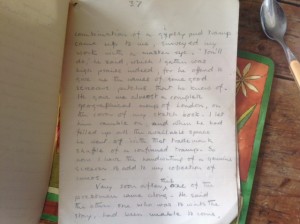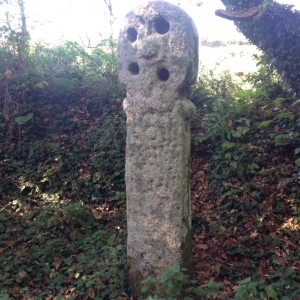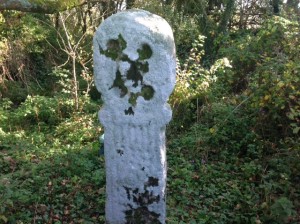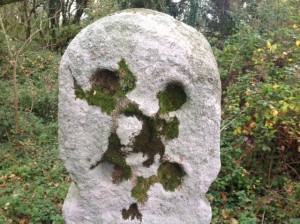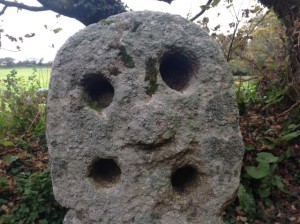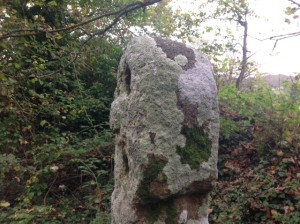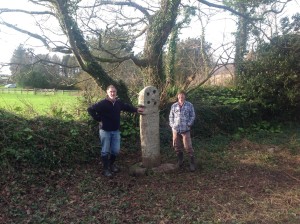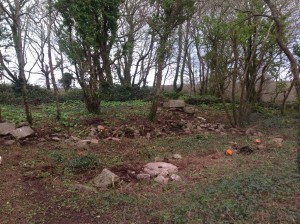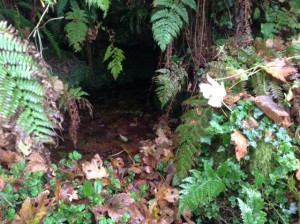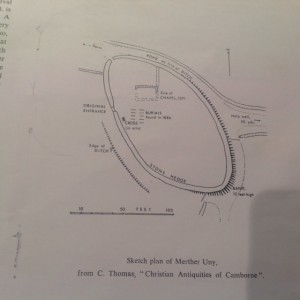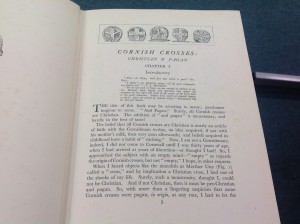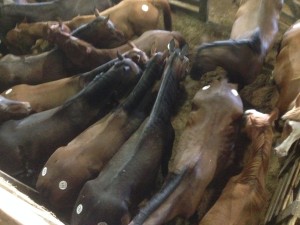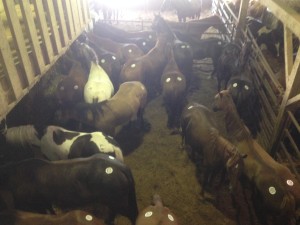Excited to begin doing some consulting work for local Cornish enterprises: Treargel Retreats: A New Cornish Retreat and Leave a Gift to Cornwall which is a group of Cornish charities promoting the idea of leaving a legacy.
blog
New Book: Becoming a Clear Admit: The Definitive Guide to MBA Admissions
I am excited to announce my new book, Becoming a Clear Admit: The Definitive Guide to MBA Admissions.
The book examines the MBA admissions process and identifies how candidates can optimize their applications, while also establishing the importance of an MBA from a top school.
The book includes a unique tiered ranking system, which better explains which schools are most highly regarded, and which schools are too similar in quality to make that a decision factor for candidates; aspects with regard to fit and career goals then become more important with regard to selecting schools to apply.
The book also includes a unique analysis of the important attributes an MBA candidate needs to highlight, while also addressing the different personal profiles that are under- and over-represented in MBA admissions. I also address how admissions committees make decisions, and how important the waitlist is to ensure the goals of the adcom are met at the end of the season.
Finally, the book includes a “Jargon Glossary,” which helps make the MBA admissions process more accessible.
Pavement Artist, London, October 1936
Rosemary Julian Harris, shortly after this experience.
Note: This story was written by Rosemary Julian Harris, prior to entering the Royal Academy of Arts, during the month of October, 1936. The content is from a written notebook of 41 pages, presumably written during the week in which she worked as a pavement artist. The story covers four days, however the first day includes some inconsistencies in terms of setting up two locations. It is possible the first day is actually two days, but appears below as was written in the original story. Rosemary Julian Harris won the Feodora Gleichen sculpture prize at the age of 19.
Pavement Artist, London, October 1936
I have lived in the country most of my life and I began to think that I would like to go to London prior to starting my sculpture course at the Royal Academy of Arts, to see what made it tick.
My mother always said London was a “golden city” with theaters and high life. I am not particularly interested in that sort of life, but am hoping to go to the Royal Academy of Arts in due course. My sister, Deseree, is a student at the London School of Economics, so I was able to stay with her in Bayswater.
Having always been interested in pavement artists since I was a child, seeing old men drawing seascapes and such like, I thought I could do more interesting things with animals and activity. So I have decided to go to Hyde Park Corner, an interesting place with all sorts of traffic, dray horses coming up the hill, and a hospital opposite where I can take my earnings, if any.
I set off by tube first and when I arrived I asked a policeman if it was OK that I set up my pitch. He said “yes” as long as I cleaned up at the end of each day. So I sat down with my crayons and a sack to sit on and started with a picture of lambs skipping about, then horses, then dogs and cats and so on. About six pictures and then I sat down, to rest my knees, and waited for action.
Most people just walked by, some looked a bit surprised but were too busy going to work to stop to speak. It was a fine day with autumn leaves coming down, and no rain, for that would have been the end and a wash out!!
I brought some lunch, which I could eat when I felt hungry.
As the day wore on more people spoke. It was very interesting watching the world go by. One old man came to me with some tips on screeving – as he called it – being a screever himself and told me the best places to strike a pitch. I preferred where I was.
Not many of my friends came to see me, but those who did said I looked rather pathetic.
I don’t care!
I think my appearance caused a great deal of interest. It needs a very brazen mind to walk about London in corduroy trousers. To keep my self possession I convinced myself that I was a girl pavement artist dressed exotically and had a right to be stared at. This ruse was so successful that I felt quite hurt if people didn’t give me a second look.
On arriving at Marble Arch I walked around it once, looking for possible sites, and then went up to a policeman to ask him where I could pitch. He was very short with me. “No Pavement Artists allowed here. If you must go anywhere the Embankment is the place for the likes of you. You can’t come here.”
As I was speaking to him an old lady of the poorer class, possibly a bit weak in the head, shouted at me “Oh put a skirt on ye, for goodness sakes do, with them things on you’re neither woman or man; wear a skirt like a decent body.”
I knew it was hopeless to answer back so I walked along the park railings as fast as I could, she shouting at me ’till I was out of earshot. It was a very discouraging beginning. Prospects that had looked so rosy when I started now seemed to be covered up by London’s murk and grime.
I walked along the empty pavement with Hyde Park Corner vaguely in mind. I walked what seemed an awfully long way, and eventually came to a park entrance, where there were two policemen on point duty. One asked me if I had lost my way; I certainly felt lost. I explained to him that I wanted to be a pavement artist and was aiming at Hyde Park Corner. He went to discuss me with his colleague who came up to me with the traditional “Here, what’s all this about? Want to be a pavement artist? How old are you?” I said “Nineteen”. “Well you ought to be old enough to know what you want so I can’t stop you. Go straight across the park and you’ll come to Hyde Park Corner!”
So I set off. The park was very empty as it was quite early in the day. Hardly anyone else was walking. The only people in sight were a few sinister looking men lurking about under the trees. They had the effect of making my fast walk develop into almost a run. The park seemed to be endless, but eventually the gates loomed into sight. By this time I had developed a most convincing limp due to a blister on my heel.
I saw another policeman in the distance and headed for him. I asked him where I could pitch and what to avoid, and he told me anywhere outside the park gates so long as I didn’t select a bus stop or cause an obstruction. This sounded simple.
I took for my pitch a site between a bus stop, a taxi cab rank and public lavatories. A very strategic position. I asked an old lady at the newspaper stall and she said screevers often came there, she didn’t know whether they were allowed to or not.
I thought I would trust to providence and settle down to draw.
With the sack I roughly swept the paving stones I was to work on and then kneeling on the sack I commenced to draw. From that moment my depression left me and I really began to enjoy myself.
My subject was animals, horses, dogs, lambs, penguins, etc. I roughed the drawings in chalk first and then went over them in crayon afterwards. I had my back to the traffic on the pavement, in fact was quite oblivious of it, until I found coins were being thrown down. So I produced a beret for them to aim at.
Incidently it is quite extraordinary how many people seem to be unable to throw a coin into a certain area, when standing directly above it.
I had just finished one picture and was starting the next when a gruff voice behind me said “Well?” I looked up and was horrified to see an enormous policeman standing over me, at least he seemed enormous from my worms-eye-view of him. I stuttered something incoherently, but he only said, “This is your first day? Well don’t leave too much in the hat or you won’t get any more.” and walked on. My relief was terrific, and the pavement might have been paved with gold instead of the coppers and small change that had found their way into the hat.
I went on drawing with renewed enthusiasm, many passing by came up to watch me. Some said encouraging things to me. The feminine part of my mind began to respond to the flattery and admiration. I was becoming conceited. When some cameramen took up their stand near me I took it for granted I was the object of their study. (Was I out of the ordinary in worthy of fame?) The answer to this came when one of them said “Excuse me miss. Would you pose in front of the drinking fountain? We were sent to photograph it but a figure with it would give it scale.” I shook my head saying, “Sorry, I must get on with my work.”
An ugly stone drinking fountain, a monstrosity, which had hitherto escaped my observation. I knelt down again, finding myself half blinded by the dust arising from my castles in the air having crashed to the ground.
As I was finishing my last drawing, a black cat with white paws jumped down through the pailings out of the park and came up to me greeting me like an old friend. It must have been my lucky day.
Having done a good two hours work and it being long after lunchtime I arranged my sacks as a slight protection from the pavement and sat down, a relief from kneeling.
The cat came back and curled up on my lap, purring like a mowing machine. My hands were hardly recognisable under a coating of pavement dirt and crayons. I tried not to think of all the various germs I was swallowing as I ate a roll. When I had finished my meager meal I was able for the first time to look at the people.
There were many catching and leaving buses. Those who gave me money were not the owners of silver fox furs and cigars, but rather the elderly and middle aged ladies of the middle class and well-to-do businessmen. Several asked me why I was doing this, from necessity or as a joke. I said it was neither but for experience with the hope of opportunity.
My attention was attracted more towards some people than others, especially if passed more than once. In this way I noticed a young man, obviously an artist from his green slouch hat and long hair, to his paint stained plus fours. He had a striking face; a trifle effeminate, but interesting in its seriousness.
Having passed me about four times he stopped in front of me and said, “Do you pose at all?” I said I didn’t being only in London for a short time and during that time working on the pavement. “But I must paint you … I must paint you. I must paint you!” He spoke as in a daze reminding me of a gramaphone needle which had hit a groove. I said it might be managed, if only to give him a mental jog.
This was successful and he gave his address and left me with, “You will come, I must paint you!”
Soon after this my friend the policeman came up and asked me how things were going.
“I’ve been having a spot of bother over you,” he said. “One old dame came up to me, in a proper sour temper she was too. Said you were a disgrace to your sex and oughtn’t to be allowed. What you needed was a good smacking, couldn’t I give you one? Well Madame, I said to her, why don’t you talk to her yourself? It’s no good giving me the dressing down, I can’t tell her to move. She’s doing no harm, not obstructing or anything. So then she changed her tune and said ‘look at those daubs she’s drawn, if she can’t do better than that she shouldn’t do anything at all’. So I said if I could do anything half as good I’d be damn proud of myself. So there you are miss.”
I thanked him very much and he stayed talking with me. He had a week on that beat and was quite pleased to find someone who wasn’t complaining about something or wanting to know how to get somewhere. He was quite the ideal policeman, a round cheerful face, serious but for his eyes which were full of humour. A small moustache and inclination to double chin. Tall yet his uniform was a collection of convex curves. A north country accent and strong sense of humour completed the perfection.
The only other charity seekers were two young street musicians who could only perform when the eye of the law was turned elsewhere. One had a banjo and sang and accompanied his own songs. The other one carried the banjo case. He told me he had an accordian but at the moment a pawn ticket had taken its place. They were blackshirts – one had a black jersey – the other blue. I asked him where his symbol was and he showed me a badge on his lapel. “It only cost two pence cheaper!”
They imparted to me the cheerful information that if I worked for long I would literally wear my fingers to the bone, rubbing the crayon in. I would also probably get pneumonia and rheumatism. I said I didn’t know about that but I seemed to be successfully working up for housemaid’s knee, having worn a hole in my trousers.
“Pavement seat” seemed a probability also, if I sat there much longer. They said they were going to America when they could and I wished them luck, they deserved it.
The policeman didn’t like them, “Don’t you believe a word of it” he said, “They’re real rascals.” Have they been playing when I was out of hearing? Had to admit they had, I am so bad at lies.
An old musician passed me – one of the old school, with bowler hat, long straggling hair and moustache, and a battered coat and tight trousers – clasping his best friend, the violin. I nearly wept when he threw me a penny, which was worth a pound to him, surely. This so depressed me I nearly threw up. What I did not want was misplaced pity. That is when I decided to do it for charity.
Several old ladies stopped and talked to me, causing me several minutes of suspense, as I expected each one to give me the promised smacking – but the majority were very kind. The general impression seemed to be that I was very brave, though I don’t know why. It only necessitates obtaining the right atmosphere to start with, the rest came naturally.
One young man with a black slouch hat – but not in other respects artistic looking – came and asked if I worked at the Slade School. Apparently he himself was a secretary, not an artist, but his sister worked at the Academy School of Art, so he claimed to know something about it. He asked me if I had ever been to a certain pub called the Fitzroy, frequented by artists and their following. As I had not, he suggested that he should take me some evening. I realized that this was being “picked up” but as it did not come into my romantic expectations, I refused. I thought it would be better to fly higher (or lower as the case may be) or not at all for a mere secretary.
My adopter, the cat, decided to leave me and disappeared as rapidly and completely as it had come and with it I imagined my luck would go too – but not entirely. While I was meditating, I noticed another artist looking at my work. He was of middle age, with the traditional black slouch hat, but otherwise not so exotic as the previous one.
He told me that he had seen my work from the top of the bus as he had passed. At the next stop he had alighted and hurried back, afraid I might have packed up. He did portraits etc. in pastel himself and seemed to think my work was promising. I explained my circumstances to him and he was interested and asked me to come and see him at his studio. I must have looked rather dubious for he hastily added, “I’m sure my wife would be thrilled to see you. She is always willing to help any artist.” I thought this might be so, or might not. However he gave me his card, and I promised to come and look him up sometime.
It was beginning to get dark, everybody having gone home to their tea and there was not much more financial profit to be had, so I decided to pack up. The policeman had told me that I must wash off all my work before I left. This I did but it seemed a waste that the work of a morning should be washed away in a few seconds. However one must take the good with the bad and as I had the good in my pockets I had nothing to complain of.
I had heard that a screever made on average half a crown a day. I thought I had made more than that but apart from the weight in my pockets I didn’t know how much. I was amazed and rather horrified to find I had accumulated over a pound. About eight shillings in coppers and the rest in small silver, several shillings and one half crown. That completely decided it. I should do it for charity in future.
Part of the original writing of the story.
NEW DAY
The following day I went into the hospital and asked to see the secretary. I was told to wait and was shown into one of the offices. The typists came in and out, they all had streaming colds and I knew I would have one sooner or later.
I waited for nearly an hour and at last my patience gave out. I explained that I must get to work as all the best business was done in the morning, before people had spent their money. I was just going when the secretary came and I explained to her that I was a pavement artist and was collecting money for the hospital; could I have a collecting box? However she explained that noone is allowed to collect openly for the hospital except on rose days etc. This was rather shattering.
I decided to go to the same patch again as I knew the policeman and it certainly seemed a successful place, unless I had just had beginners luck the previous day.
I wanted to think of a notice but I was not allowed to mention the hospital, it rather limited me. I wanted the public to realise I was not what I appeared. But what was that? Not a tart as I had no make-up at all on, then it must have been that of a rather pathetic figure, that of a young girl in very shabby clothes; a sight guaranteed to rend the average heart string. So I wrote beneath the beret the words “Not for myself”. Of course many people asked, “Well who is it for then?” so I explained.
One old lady, when I told her it was for the Hospital, said that of course she herself did not believe in Hospitals. Where did all their money go to anyway? She knew for a fact that the London bus drivers themselves contributed several thousands towards it. Why didn’t I give money to some really deserving case? I realised it would not have been tactful to argue with her, so I meekly smiled and thanked her.
The policeman came up again to talk with me. I asked what I should draw and he jokingly suggested himself. I thought I had better not do quite that so I did a little white dog wearing a policeman’s helmet. This pleased him immensely and he kept on bringing up his colleagues to admire it.
One kindly old woman passed me for the second time, I remembered her by her unusual clothes (the rag bag variety) and her stockings, which ran endless spiral races down her legs. She beamed at me with a friendly, “How are you getting on dearie?” I said I was getting on quite well, thank you. “That’s right dearie, good luck to ye!” A seemlingly trivial incident but a very pleasing one when you are sitting alone on a cold pavement.
The taxi drivers from the nearby rank would come up and talk to me sometimes. One cheerfully told me that if I didn’t get a cold in my kidneys it wouldn’t be his fault that he hadn’t warned me! I got quite a lot of money from people hiring taxis, as they could afford silver.
A young girl artist came up to me and said she had often thought of doing a screeving job but didn’t know how to set about it, so I told her what little I knew about the rules and regulations. She had thought of a pitch near Burlington House but I told her it would be safer to ask a policeman near there. I shouldn’t have chosen that pitch myself, as people coming out of the Academy would probably find a pavement artist rather an anti-climax.
Another elderly lady threw a shilling into my cap and said she liked my work, but it must be a very hard life. I agreed, but I was thinking of the pavement itself.
Of course many dogs passed with their owners – the majority of them running loose, being town dogs presumably. To these the wall behind my pitch seemed to be a dog’s Post Office and many of them came to leave and collect their letters. This was not too good for my art but very good for trade as embarrassed owners came running to retrieve their miscreants, full of apologies which necessitated their putting something in the hat. Quite good trade could be done this way, if carefully thought out.
It was getting near the end of daylight by then so I packed up and took my earnings to the hospital. They benefited by about eighteen shillings, from which I had deducted my day’s expenses, sixpence. They were immensely grateful, and surprised when they heard how I had come by it.
DAY THREE
So far I had been exceptionally lucky in my weather, having had two reasonably fine mild days. This was too good to last and the third day it broke into a typical London drizzle, making the pavement wet and greasy, impossible to work on. However I thought there might be some possibility of a fine interval so I went to Hyde Park Corner and sat in the subway, reading the paper and trotting up at intervals to view the sky.
About half way through the morning the rain stopped and prospects looked brighter, except that I found myself with the first symptoms of the promised cold in the head. I went to my pitch and mopped up the paving stones as well as I could with my sacks.
It was most discouraging drawing as the chalk would not mark well, and the colours looked dead. I managed to get down about four very mediocre pictures and sat down for lunch.
Very few people were out. Then simultaneously the rain and my cold came out heavily. This was more than I could bear, so I washed out what little remained of my pictures and came home. A bad day financially, I only made three shillings and ninepence, which seemed very petty after the high standard I had set myself previously.
LAST DAY
My last day on the London streets was all that could be desired of autumn. Blue sky and gold trees, wind but no rain. Fallen leaves dressed in the season’s newest shade vieing with each other for first place in the mad race to catch up the departed summer.
I drew with renewed vigour and inspiration. While I was drawing, two pressmen from a daily paper came up and asked if I could spare a few minutes and give them a story. I condescendingly said I would answer their questions if they could come back later, but at the moment I was busy working. They were very polite and said they would come back in the afternoon. This gave me a rather satisfied feeling.
My next visitor was an elderly man of the solicitor type, rather forbidding in appearance. He asked me the usual question, for whom was the money if not for myself. So I told him I was doing it for charity and for the experience. He dropped half a crown in the hat and went on without a smile.
My last picture was, in my own opinion, my best. One of a zebra, which looked alive. While I was drawing this, a young woman came up and said, “Excuse me, but do you ever illustrate books?” I told her I hadn’t so far but that I would like to very much if I had the chance. “I wondered” she said, “because I have just written a book of poems about animals and the man who was going to illustrate them for me has been taken ill, so I thought you might take his place if he is unable to do it. I think you are very talented and quite capable of doing it.” I gave her my address and she said she would let me know. This would be a big opportunity if ever it came to anything. I felt very elated.
After this came rather a contrast in the shape of an ex-pavement artist. A typical cockney, very small with fair straggling hair and a few mishaven bristles on his receding chin. He fixed his rather watery blue eyes on my hungrily. He talked to me for quite a long time, shifting his weight from one shabby shoe to the other, and punctuating his sentences with nervous giggles and long drawn out sniffs. He told me he had done some screeving and used to get his chalks cheaper by going to the wholesale dealers and buying the broken ones. Also he said some screevers used bath brick on the pavement first as it made a better surface to work on. Two tips worth knowing!
Until recently he had had a job in the kitchen of some restaurant. I suppose the chef enforced some standards of cleanliness, for heaven help anyone who ate food prepared by him in his present condition. He said he had been kicked out owing to having a cold. An unconvincing story I thought. He rather reminded me of a cold himself, the way he hung around me. I appeared to be engrossed in my work and he eventually left me. A relief, as the pity I felt for him was easily overcome by the nausea experienced when in his proximity.
When I was packing up in preparation for the afternoon’s contemplation of the pavement passers by, one of the taxi cabbies came up to tell me that the previous afternoon, when I had gone home early owing to the rain, two men, aged about twenty five to thirty, who looked like artists, had been inquiring for me, wanting to know what kind of work I did and any particulars about me. Of course the cabbies were unable to give much information, which caused me all the more annoyance at the thought of having missed an opportunity to possible success. But there was still a faint hope that they might come again.
One young man came and studied my pictures for some time before asking, “Well, and where did you learn to draw?” I replied I was still learning, every day discovering some fresh fault in my work. He said he wished he could do half as well himself. This was satisfying but of no great value.
An elderly man stopped before me, and I recognized him as one of my previous patrons. “You remember me I expect,” he said, “I came this morning. I am going to write a little story about you, in memory of my daughter, the sweetest girl whoever lived. She, like you, was always willing to give money to charity. I am not charitable myself but I admire the virtue in others. I am not going to ask your name and unless you want me to know your Christian name, I shall think of you as Betty, that of my favourite niece.” I thought Betty was as suitable as any except my own name, so I left it at that. I also gave my age and a few particulars but I doubt there was enough subject for a story. Then he continued, “I am going to give you ten shillings for the hospital, because I trust you. I could take it to them myself but I’d rather you did. Good bye and success to you.” And he walked away with hardly a smile, merely a polite hat lift. A kind heart very carefully concealed and protected from the outside world by a suit of coldest steel. I must have an honest face, I decided.
The next face to talk to me was no beauty. A man of about twenty five, with terracotta coloured hair, a pink face and broken looking nose, who said he had been a comparatively famous pavement artist’s model. He was well educated and quite interesting. He told me a bit about his life with the pavement artist. They did not begin work ’till eleven am and went on ’till eleven pm to catch the theatre crowd. He had been given the sack because he didn’t work hard enough and was now studying to be a “masseuse” and was very interested in all the different kinds of medical rays.
But most of it was lost on me as he was literally talking above my head. People do not seem to understand that sound never drops, being inclined to rise if anything. So when talking to a person seated on the ground it is necessary to come down to their level to a certain extent, if an intelligent conversation is to be carried on. As it was my part of the conversation consisted chiefly of “what?” but as the majority of mankind is quite content to talk to anybody who will represent an audience these facts are of no consequence.
Screevers and their following seemed to be rather abundant on that particular day. A marvelous combination of gypsey and tramp came up to me, surveyed my work with a master eye, “You’ll do,” he said, which I gather was praise indeed, for he offered to give me the names of some good screevers’ pitches that he knew of. He gave me an almost complete geographical map of London, on the cover of my sketch book. I let him ramble on, and when he filled up all the available space he went off with that trademark shuffle of a confirmed tramp. So now I have the handwriting of a genuine screever to add to my collection of curious.
Very soon after this, one of the pressmen came along. He said the other one who was to write the story had been unable to come but he himself had been given some questions to ask me. He didn’t know much about the job, being a racing journalist with one main ambition, to own a racehorse. I promised to do a portrait of the first Derby winner he owned.
I gave him a few facts and incidents from my experience of screeving, but would not give my name and address. I did eventually, so that they would be able to send me a copy of the edition with the story in it. Incidentally, after I left London I had a very nice letter from the journalist saying the paper wanted to print my name and address, so as this was against my wishes, there would be no story. This was very considerate, I thought, as, having the necessary particulars they could easily have published the story, got the cash and let my feelings look after themselves, which shows there are always exceptions to every rule, even to the characters of pressmen.
While I was being questioned, my friend of the terracotta hair came up and said, “Excuse me a minute, would you mind signing your name for me in case you are some day famous?” He handed me a notebook quite seriously, so I gave him my signature. He must have been one of the optimists who make this world a brighter place!
It was getting late by then and I would soon be leaving the pitch for good. I had hardly seen the policeman that day, there had been so many people talking to me. I had done a sketch of him from across the road. When he came up I showed it to him and he was extremely flattered and asked to have it. But my sketches are too valuable to me to give away so I said I’d send him one on an Xmas card or something. “Would you give me your name and address?” I said, realizing that it was quite a privelege to ask for this of a policeman. It so much more often happens the other way round.
Soon I packed up and washed out my drawings for the last time. I was sorry to part with the zebra for he had served me well. I took my earnings to the hospital and found I had made over thirty shillings, partly thanks to Betty’s uncle.
I made my way back to my sister’s flat in Bayswater, walking, to think about the last few days. I had seen a bit of what London was made of, the good and the bad. And the hospital was a bit better off for my earnings and I was more than ever looking forward to my life as an art student at the Royal Academy in due course.
This story, originally written by Rosemary Julian Harris, was later transcribed by her daughter, Veryan Leycester Roxby, and then by me, her grandson.
Merther Uny, Cornwall: Chapel Site and Stone Cross
There are two stone crosses in Merther Uny, near Wendron, Cornwall.
The stone cross pictured below is difficult to date, but is considered an old cross. It is in close proximity of an ancient chapel, of which little remains, within an ancient enclosure, also called a lann or round, the enclosure also includes a burial ground. The original settlement may date back to 1,000 BC.
The entire site is a scheduled monument.
The site dates back to around 1,000 BC, according to an excavation undertaken in 1968. Obviously this pre-dates Christianity, thus the site transformed from a pagan culture to a Christian culture at some point in its history.
The ancient chapel is documented to have existed in the 1300s, but could well have existed earlier. The Stone Cross is presumed to be a Christian Cross (Langdon et al); while it is difficult to date, it is presumed to be “pre-Norman”. That being said, this opinion is not universal; Drexler (1938) asserts the “monolith” is of Pagan origin, and therefore could be dated earlier. Drexler also questions whether Uny (Euny) was in fact a Christian saint (there is no documented record of his existence anywhere) but was perhaps a pagan deity. All this is conjecture, but interesting to consider.
This is a view of the front of the cross, from within the overgrown enclosure it resides. It has four indentations that form an almost perfect square.
This is a view from behind the cross. Identical markings appear.
A closer look at the head of the stone cross. More detail on the markings (additional images at the bottom of this post).
Resources that provide insight to the cross and ancient chapel site include:
Corpus of Anglo-Saxon Stone Sculpture, XI, Early Cornish Sculpture (Book), includes: “A suggestion that the cross may date from about 1000 A.D. and mark the foundation of Merther Uny chapel site appears to lack substance, especially since it is known that the cross has been re-fixed (Thomas A. C. 1968b, 81-2; Langdon, Arthur G. 1896, 346). However excavation here did establish that the small curvilinear enclosure within which the cross is located started life as an Iron Age or Romano-British round, whose earliest use as a chapel yard is indicated by finds of bar-lug pottery (Thomas A. C. 1968b, 81-2). Henderson suggested that the chapel had its own parochial limits but for some reason never attained full parochial status (Henderson C. G. 1957-60b, 476-7).”
Cornish Archaeology: 1968 Vol 7, Pgs 81 & 82, a report of the 1968 excavation, includes: “The fine standing cross of granite, 7 ft. 5 ins. overall with a sunken wheel head and a dot-and-panel ornament, must date from this time, and stands in its original pit …”
Old Cornish Crosses, by Arthur Langdon, published in 1896. Book is a free download, out of copyright. Pages 346 – 347 includes details about the cross in 1896, includes four wonderful sketches (see two images below). Classified as an Ornamented Cross with Beadwork.
Cornwall & Scilly HER, includes: “A pre-Norman decorated cross, in situ within the lann with which it is contemporary.” and “At Merther-Uny a granite cross, 2.26m high, stands in its original pit within the lann (24541.2) which it is contemporary with, just south of the original western entrance (b3). Shown on the OS map of 1963 (b2). The head, both front and back, has a central boss surrounded by a wide encircling bead, with four deep, offset sinkings, in some places cutting through the bead. The shaft is decorated …”
Heritage Gateway, includes: “Despite partial excavation, the round, medieval chapel, burial ground and standing cross 60m south east of Merthyr Uny House has already produced rare and important information regarding it use, function, re-use and longevity and will contain still more archaeological and environmental evidence regarding its use and landscape context. The cross is also a particularly well preserved, early and rare example.” and “The monument includes a round, a medieval chapel dedicated to St Uny, a burial ground and a standing cross situated on a ridge, overlooking the upper valley of the Helford River. The round and burial ground survive…” (some good additional information at this link)
Medieval Britain In 1968, 1st page of document, Pre-Conquest, includes: “the ruined walls of a reputed medieval chapel dedicated to St. Uny, and human burials. Originally it was apparently a small domestic enclosure in use from the 1st century B.C. to the 2nd(?) century A.D. About 1,000, if not before, the site was re-employed as an “enclosed development cemetery” of the familiar Cornish Lan Class.”
Merther Uny Chapel (Ancient Monument No 162), Gweek, includes: “Ruined walls of early Christian chapel. Circa C6 and later. Granite rubble. Excavated in 1968 and 1969, now overgrown and largely hidden at the time of the survey.”
Some History of St Euny from a book by Frank Michell, best resource about the life of St. Euny (Uny), includes: “The word ‘Merther’ signifies a Martyrdom, but more generally. a Chapel in honour of a martyr”. St. Euny was a well-known Cornish Saint; therefore ‘Merther Uny’ would signify either the site of his martyrdom. or burial-place, or a chapel of which he was Patron.
Euny does not seem to have been a martyr,…”
Wikipedia: Euny, includes: “Saint Euny or Uny (6th century) is the patron saint of the churches of Lelant and Redruth in west Cornwall, England, UK.” and “In a circular garden still known as “the churchyard” in which human bones have been dug up are the remains of a small chapel. Nearby is “a magnificent Celtic cross of an enriched and most original design”. This chapel is on the site of a very ancient church in honour of St Euny. After the Reformation it was allowed to decay.”
Wikipedia: Wendron, includes: “At Merther Uny was a quasi-parochial chapel of St Uny with its own cemetery.” and “Langdon (1896) recorded the existence of eight stone crosses in the parish, including two at Merther Uny.”
Times Walks: Gweek, Cornwall, includes: “we found a gateway to a walled enclosure choked with scrub, the site of a chapel dedicated to the Irish hermit. Old tales tell how …”
In Search of Cornish Relics, includes: “The Cornish place-name “Merther” refers to a saint’s shrine, so where this place-name element occurs (as at Merther Euny in Wendron) there were probably also saint’s shrines in earlier times, though there is nothing to see at any of them today.”
Saint Uny, includes: “The saint also owned two chapels, Merther Uny (SW 7034 2932) in Wendron parish by 1334, possibly connected with a well nearby (7041 2938) …”
Merther Euny – Holy Well or Sacred Spring in England in Cornwall, includes: “Take the path from Merther Euny farm and go straight on down to the woods. About 100 yards down, the well is located on your right and is built into the bank of the path you are on.” (see image below)
Cornish Crosses: Christian and Pagan, 1938, by Drexler, Considers whether some Cornish Crosses are in fact of Pagan origin. The book opens with a discussion of the Merther Uny Cross (monolith, see image below), and then dedicates an entire chapter to make the case that it is actually a pagan cross. Most other “experts” consider it a Christian cross.
Interactive: Old Map of Merther Uny
Interactive map of Merther Uny showing both Stone Crosses and site of Ancient Chapel.
Tin Streaming: 13th Century, related, as this most likely occurred in Merther Uny.
If you know anything about this cross, lan, or area, please post in the comments, and I will edit this blog to keep it updated.
Andrew Langdon (left) and Roger Smith (right), Cornish Archeology Society, at site to help with clean up.
Site of the ancient chapel
Sketch of cross from 1896, Arthur Langdon, Stone Crosses
Sketch of cross from 1896, Arthur Langdon, Stone Crosses
Holy Well, Merther Uny
A sketch of a map of the ancient site at Merther Uny
Opening page of “Cornish Crosses: Christian and Pagan”: Merther Uny cross is discussed “monolith” “monstrosity” “pre-Christian and pagan”
Phone conversation with Ahmed Zayat, owner of American Pharoah, prior to the Haskell.
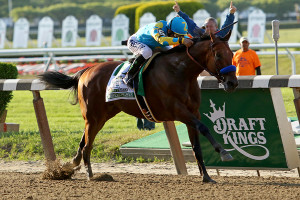
American Pharoah strides clear in the final leg of the Triple Crown, the Belmont Stakes.
Photo Credit: Jessie Holmes/Equisport Photos
The following is based on a telephone conversation I had with Ahmed Zayat, owner of Triple Crown winner American Pharoah, on Tuesday, July 28.
American Pharoah begins the second part of his three-year-old season in the Haskell Invitational Stakes on Sunday at Monmouth Park.
AB: What is it like to own an American treasure.
AZ: American Pharoah is a blessing, a special horse, a sweet horse. He is a one-in-a-lifetime horse. It is an unbelievable privilege. We bred him as well as own him; we did it the hard way as [Bob] Baffert [his trainer] would say, breeding him.
He is America’s horse, we’ve waited for this horse to bring us hope. He is everybody’s horse now. We own him, we are his custodians. It is a responsibility. I feel a sense of responsibility to share him, to share him with the public. He belongs to everyone now, he is a Triple Crown winner. We have to be extremely careful what with we do next.
American Pharoah has won 5 Grade 1 races, on different tracks, in different conditions.
He is carrying his flesh well. When considering his next race, we can see how is he traveling. He is a great horse, but the horse always comes first.
We have to be careful not to tarnish the Triple Crown. We are not scared of racing him, but it is a balancing act. He enjoys his training, he enjoys his racing, he is a happy horse. We won’t race him unless we know he is ready, and really fit. But we know that things can happen in a race; Secretariat was beaten by Onion at Saratoga, it does happens. But as long as he is happy and healthy we will race him.
I am a fan before being an owner. I am a student of the game. Things happen in racing. Small fields, you become the target, but we cannot worry about that. I cannot micromanage the race. As long as he is happy, healthy and fit, in that order, we will keep racing.
He did some incredible things in this year’s Triple Crown, beating larger fields than in the past. He has won at seven furlongs up to a mile and a half in his career. He has won on the polytrack, and all kinds of dirt surfaces.
AB: Is it about the horse or you?
AZ: This is all about American Pharoah. I am just a person, a very lucky person. We have been gifted with a beautiful horse, it is just a beautiful gift. But it is all about American Pharoah. Its about the athlete, I love horses, I just do.
Not long ago I was laying down in his stall, he is a 1200 pound animal. Baffert was nervous. I told Victor [Espinoza] to come in a lay down with us. Pharoah is really smart, just licking me, I guess he loves the cologne.
I am the ambassador of this horse.
AB: Does he compare to Secretariat?
AZ: No, no. No one ever.
We all remember the “tremendous machine”. Winning the Belmont by 31 lengths, in a little over a canter, it was incredible.
American Pharoah is American Pharoah, Pharoah is royalty. How will he stand in history? His Belmont was a very respectable time, his last quarter was fast, but it is all hard to compare, but of course I am a bit biased.
I was about 10 when Secretariat won, I have watched it. We all remember the images. But I will tell you, the roar of the crowd [when American Pharoah won], 90,000 people, hugging, kissing, happy, screaming, it was an incredible moment. It was a mad house, NYRA security was around — it was a mad house, everything was so spontaneous, crazy elation and lots of sheer happiness, incredible, a celebration of joy.
AB: Decision to sell his breeding rights.
AZ: It was not a difficult decision. Every stallion I have had, since 2006, it is now 14 stallions. People in Kentucky call me a stallion maker, Pioneerofthe Nile, Paynter, Bodemeister and so forth.
I am used to making stallion deals, but I always keep a portion, whether it is 25% or 75% as with Pharoah’s father, Pioneerofthe Nile. I never sell 100%. It provides me access. I like to go to the barns and visit. I would like to breed to him. I am still in control of American Pharoah while he races, and when he retires I will still have a portion.
AB: Does the champ have a barn name?
AZ: There is no real pet name for American Pharoah. Some people call him “the Pharoah”, others call him “AP”. Different people call him something different.
AB: If you could change something in racing, what would it be?
AZ: The Biggest thing is we need the fans of the sport, and what is a sport without transparency. And transparency should not be a buzzword, it needs to be operational. The disclosure of medical records for example.
We need to bring fans into the action. We need to be open. We can use social media, more open communications. That’s how American Pharoah got his name. We try to open up our barn so fans can come and see him. I think this is very important.
We are also looking at the use of lasix with a research project in Gulfstream Park. it is a scientific study, privately funded, looking at lasix-free races versus lasix races. We are funding it, we want hard data. We have commissioned one of the foremost vets to undertake the study. Gulfstream Park is providing us all the access and support.
AB: Thanks for your time.
AZ: Thanks for the coverage you helped provide with Paynter.
AQHA’s disingenuous position on horse slaughter, encourages membership to derail SAFE Act
It is surprising to some people when they learn that horse-related organizations support horse slaughter. Why would they do that?
The short answer is, it supports their industry interests, and their membership interests. That is the case for both the AVMA (vets), and the AQHA (quarter horse association). They then try to convince themselves and everyone else that they actually take this stance for the horse, not for their own interests.
Yes, slaughter is good for you, really ?
Anyway, I digress. I thought it would be interest to parse the statement from the AQHA, in support of horse “processing” (“processing” is surely more appealing than “slaughter”).
Here is a link to the AQHA’s complete statement: AQHA News Bits: Unsafe Consequences.
There is a preamble about the SAFE Act, and its rationale, that of food safety. The statement then avoids the food safety issue completely.
They then note that the ban of horse slaughter would “mean that thousands of unwanted horses will be sentenced to a destiny of starvation, abuse and neglect. It’s a hellish demise.”
There are two problems with this emotive statement:
1. while there may be some unwanted horses, to presume all horses that are purchased by kill buyers to go to slaughter are unwanted, is not accurate.
2. “slaughter” or “abuse and neglect” is not a binary choice. The third option, cleverly left out of the entire statement, is that of humane euthanasia.
Subsequent to the above quote, the statement then goes on to tie the number of horses that are slaughtered to the number of unwanted horses. Again, there is no proof that is the case. What is known is that the number of horses slaughtered is simply based on the demand for the horse meat from the customer, via the meat packers and the slaughter houses. Horses are slaughtered because there is demand for the meat, slaughter is not just a disposal solution for horses no one else wants.
The statement then goes on to discuss the increasing number of abuse and neglect cases, which may or may not be accurate. Whether it is or not has little to do with slaughter, because we are currently slaughtering plenty of horses (same numbers in recent years, so an increase in abuse cases is more likely an economic issue, or an issue of horses no longer being employed for whatever work they were doing).
The statement then examines the cost of taking care of all the horses that are sent to slaughter. A considerable cost indeed, but neglects to consider that some of these horses would be humanely euthanized, some would be diverted to new careers, and some would find other solutions. This ignores the idea of “owner responsibility,” and each owner doing the appropriate thing for his horse. Thus the burden on the government is, at least, exaggerated.
Then they discuss the “property rights” argument that surrounds the horse. The AQHA firmly believes anyone has the right to do what they want with their horses, which includes slaughter as an end of life option. “Salvage value” is another term that I have heard being used.
There is then some preamble that ties together the AQHA, AVMA and AAEP together in wanting to slaughter our horses domestically. Well, we know that each organization is pro-slaughter, sadly not so much “pro-horse.”
The statement concludes,
“As we celebrate the Fourth of July weekend with family and friends, I am reminded that this holiday weekend is not only about picnics, parades and fireworks. July 4th celebrates the birth of American independence, and because of our freedom, we have the opportunity to make a difference in the lives of others, including our horse.”
That statement seems disingenuous at best.
In summary:
The SAFE Act is about food safety, which is a genuine concern given the undocumented drugs that American horses receive, before they become a “food animal”. The response from the AQHA completely ignores this, and moves the conversation to an “unwanted horse” issue. They do this in a very disingenuous manner.
For those of you who want to learn more about the horse slaughter issue, and make a truly informed decision on what is the right thing to do, I ask you to review my video series. The better informed we are, the better it will be for our horses.
Three Heroes, at their best
Probably the three greatest moments in Steeplechase history over the last forty years.
Red Rum’s third win in the Grand National, 1977
https://www.youtube.com/watch?v=EADMXVl0ccQ
Desert Orchid’s fourth win in the King George, 1990
Kauto Star’s fifth win in the King George, 2011
Broker Programs: A Complicated Issue
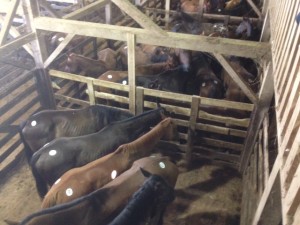
Broker Programs: It’s Complicated
Broker programs are perhaps one of the more controversial aspects of the horse slaughter system that we have in the United States.
A program is typically run by a rescue organization which has a relationship with a kill buyer. The rescue organization will promote the horses that have been acquired by the kill buyer, to help those horses find a home, before they would be shipped to slaughter if no home is discovered. This all occurs in a compressed timeframe.
This is the last chance for these horses. For that reason, many people will support these programs to try to help place these horses, either by supporting fundraisers, sharing the fundraisers, or offering homes.
Some of these horses were purchased by the kill buyer at a kill auction. Some were surrendered by owners who determined that they had no other option, due to a variety of circumstances. Some were culls from a variety of situations, some of which went directly to the kill buyer.
The kill buyer is the option of last resort.
So why the controversy ?
There are five broad reasons why some people consider the broker program bad for horses and the anti slaughter movement.
1. The number of horses slaughtered remains constant
A kill buyer, that enables a broker program, now has access to a new market for his horses. Thus, the kill buyer can purchase more horses, knowing that some will now be purchased through the broker program. The broker program is not reducing the number of horses that enter the slaughter pipeline, but is increasing the business opportunity for the kill buyer.
Because the broker program is not reducing the number of horses that the kill buyer is shipping to slaughter (that number is determined by the contract the kill buyer has with the slaughterhouse to which he is contracted), the broker program is essentially determining which horses go to slaughter. For each horse saved, another horse is swapped into his place.
2. Emotional buy
The broker program typically operates in a compressed timeframe with a certain outcome. The kill buyer purchases the bulk of his horses at a kill auction (New Holland, PA or Sugarcreek, OH for example) and will ship those horses to a slaughterhouse, or the slaughterhouse’s feedlot, a week or so later. It is within that timeframe that the broker program needs to take pictures, and promote the horses through social media and other outlets.
The sense of urgency is real, the images are real, the “kill truck is coming” is a popular refrain. This creates a situation of drama, that inspires people to do things that they might not do under ordinary circumstances.
It also deflects money and effort from other types of rescue programs, and the broader horse slaughter issue.
3. The Price is High
Oftentimes the horses are surrendered to the kill buyer, or purchased very cheaply at the auction. Because the community is trying to “rescue” these horses, there is a sense that they should be able to purchase the horses at close to what the kill buyer pays. In some instances this will happen, if you have a relationship with the kill buyer, and make an offer to him at the auction, after the sale of a horse. At that point the kill buyer can simply purchase another horse to replace the one he has bought.
Once in the broker program, this is no longer the case. The kill buyer’s main customer at this point is the slaughterhouse, so it is that price point, the price that the kill buyer can earn at the plant, that should be used to compare the prices offered by the broker program. This may be 50-100% over the purchase price at the kill auction for example.
Added to that are costs associated with the broker program. It takes time and work to make these horses available online, that time and work also needs to be rewarded.
4. Selective Access
The method of deciding which horses are available through the broker program also creates controversy. It is not always all the horses that the kill buyer has in stock. Why? The kill buyer has horse dealers with whom he works. Sometimes those dealers do not want to be exposed (someone hussling racehorses from the local racetrack for example) so the horses that that dealer brings to the kill buyer will not be part of the program.
Because the broker is typically the only “rescue” with access to the kill buyer’s pens, and understands which horses can be made available and which cannot, many consider that they are simply complicit in the entire slaughter system.
5. Working with a Kill Buyer
Can someone really be considered a rescue, if all they do is offer a broker program and work directly with the kill buyer? Some argue no, some of course argue that absolutely they can.
The relationship with the kill buyer is controversial, especially if there is a lack of transparency in terms of how that relationship works. Broker programs that have been controversial in the past include CBER (Washington State) and AC4H (Pennsylvania).
In Conclusion…
This is a controversial aspect of the horse slaughter system, of that there is no doubt. Broker programs have done some great things, especially for the individual horses which have been saved, but there are always consequences to these transactions.
If you think I missed a point, or wanted to share your thoughts, please use the comments.
To learn more about the horse slaughter issue, you can explore my three part video series, Horses: Sports, Culture, and Slaughter.
Horse Slaughter: A fractured effort
Together, we can make a difference
There is no doubt this post will piss some people off. So be it.
I have been a part of the anti-slaughter effort for a few years now. There are a few things I have learned, most importantly, we are on the right side of the issue. Horse slaughter should be ended. Full stop. The reasons are manifold, but the one argument I tend to focus on is that the horse is not born a food animal and is not regulated as a food animal.
OK, that being said I have learned something else too, the narrow-minded points of view of some of those in the anti-slaughter communities has created a fractured effort.
In Washington there is a bill, The SAFE Act, that is designed to end horse slaughter. Bravo to those supporting this bill.
Sadly there is also an element of the anti-slaughter movement which won’t support the bill. Should I repeat that for comprehension? Yes, there is a population among the anti-slaughter communities that do not support the bill.
The reasons for not supporting the bill appear three-fold:
1. it is poorly written (personally I like its simplicity)
2. it is unenforceable (really, I think we need law first, then figure out how to enforce the law)
3. Washington is so washed up in money that we have little chance of getting the bill passed.
OK, in principle I agree with the latter argument, but I do not agree that it means we should not support the bill.
I really wish there would be a way to bring the different factions of the anti-slaughter movement together. Together we are much stronger, fractured we are weak, the infighting is ridiculous.
Someone needs to take the lead, call all the players together, and lets get something done.
I address this issue, and of course many others, in my three part YouTube series, Horses: Sports, Culture, and Slaughter (a small plug here).
Unwanted Horses and the Slaughter Solution
Horses at Sugarcreek. Unwanted or just Unlucky?
A couple of weeks ago I asked a question on Facebook, “Do you think there is such a thing as ‘unwanted horses'”. The question was the result of a conversation I had previously had with some influential animal welfare lobbyists in Washington DC; they claimed there is no such thing, it is simply pro slaughter propaganda.
I disagreed. I suggested I had seen plenty of ‘unwanted horses’ during my visits to kill auctions and feedlots over the last several years.
The reaction of posing the question to Facebook has been very interesting, with plenty of opinions supporting both answers. I will try my best summarize some of those points of view.
One theme of answers simply supports my own thinking; yes, there are plenty of ‘unwanted horses’, sadly, and we need to develop better solutions for the problem of unwanted horses. None of us is advocating that horse slaughter is the right solution, but we understand that it is one of the current solutions.
A second theme, the opposite theme, is that there are no unwanted horses. “I would save them all”, “I want them, therefore they cannot be unwanted”. While this sentiment is quite popular, it is obviously unrealistic, and gets to the semantics of the meaning of the word “unwanted”. These animals are not unwanted by everyone, just by those that currently own them.
They are not universally unwanted, but nor can they be universally rescued, even in a world of perfect information.
A theme similar to the above, is something like, “I want the horse, but cannot afford it.” So while the horse might not be truly unwanted, it is an economic burden which means that there is a population that might want, but cannot have, a horse. In addition, plenty of people purchase a horse, but then cannot afford the long term financial obligations that purchase creates, which puts the horse in jeopardy. A horse is expensive.
Another theme, there are no ‘unwanted horses’, by definition there is a kill buyer buying horses, so they are wanted, for the slaughter pipeline. Well, that is somewhat some of my initial point, the slaughter business helps take care of the ‘unwanted horse’ problem, as do horse rescues, rehab organizations and anyone else who is a customer of a horse seller.
This answer also does not cover the horses even the kill buyers choose not to purchase; I have seen them turn away from horses in the ring that do not fit the type of horse they seek.
Some argue that kill buyers outbid rescues in an attempt to acquire horses for the slaughter pipeline. This argument was not covered in the conversation thread above. While this is true, I have witnessed it, it is anecdotal at best, and occurs somewhat infrequently. A kill buyer may be needing to complete a load that will be shipped shortly, so finishing up that load creates this behavior. My own experience suggests that there are usually plenty of horses available to kill buyers without them needing to bid against those seeking to save the horses.
Others noted that the behavior of dumping horses, to let someone else deal with the problem, is simply symptomatic of the society in which we live. A culture of “instant gratification”, before we move on to the next cool thing. Or the horse simply gets old, injured, is no longer useful, fast, pretty, or whatever. Sadly I think that is probably correct.
Horses can live long lives, oftentimes their useful life (as a racehorse, sports horse, or working horse) is far shorter. The horse switches from an asset, generating dollars, to an economic burden. Oftentimes, owners of these horses’ economic relationship is such that they will only keep the horse while it is an asset. Those horses then become unwanted by those owners as soon as they become a liability.
The reality is, semantics aside, there are horses that in certain circumstances, find themselves in jeopardy. Whether we call them “unwanted”, or “unlucky”, they are at risk for slaughter.
By denying there is an unwanted horse problem, we won’t come up with the appropriate solutions needed to ensure we can end horse slaughter. We also lose credibility in the horse slaughter debate. If we deny something that most people actually agree exists, it damages the credibility of other claims we might make about the horse slaughter system.
My series, Horses: Sports, Culture, and Slaughter focuses some of its attention on the issue of unwanted horses, as well as the myriad other arguments that are used to support or end horse slaughter.
